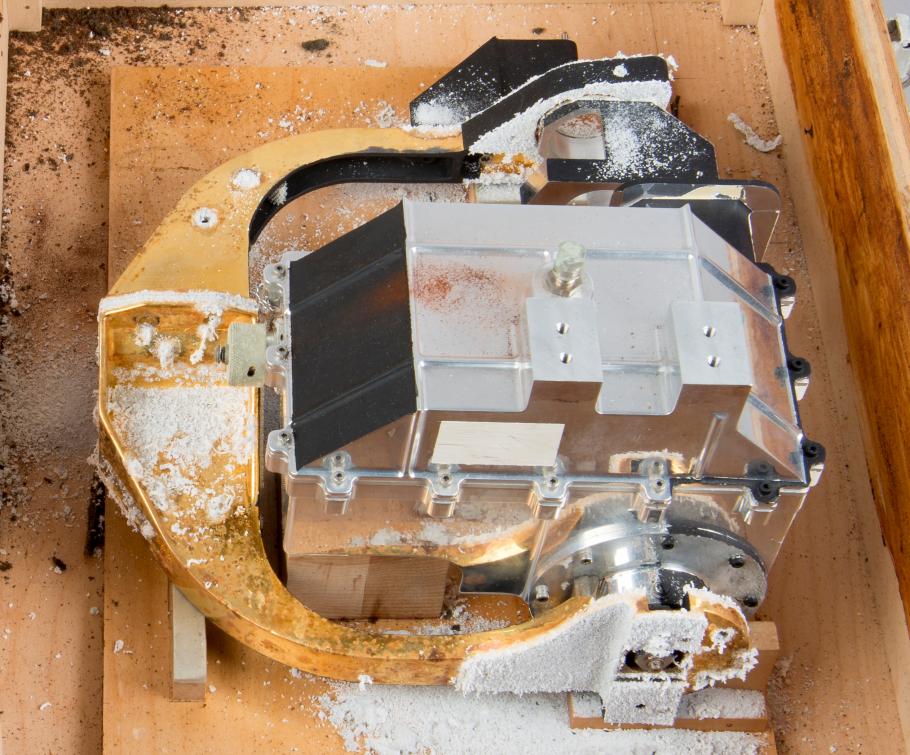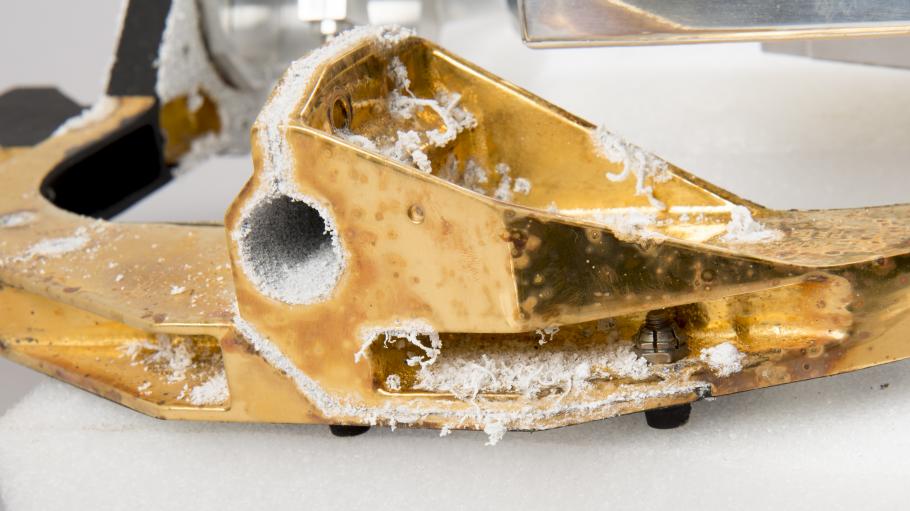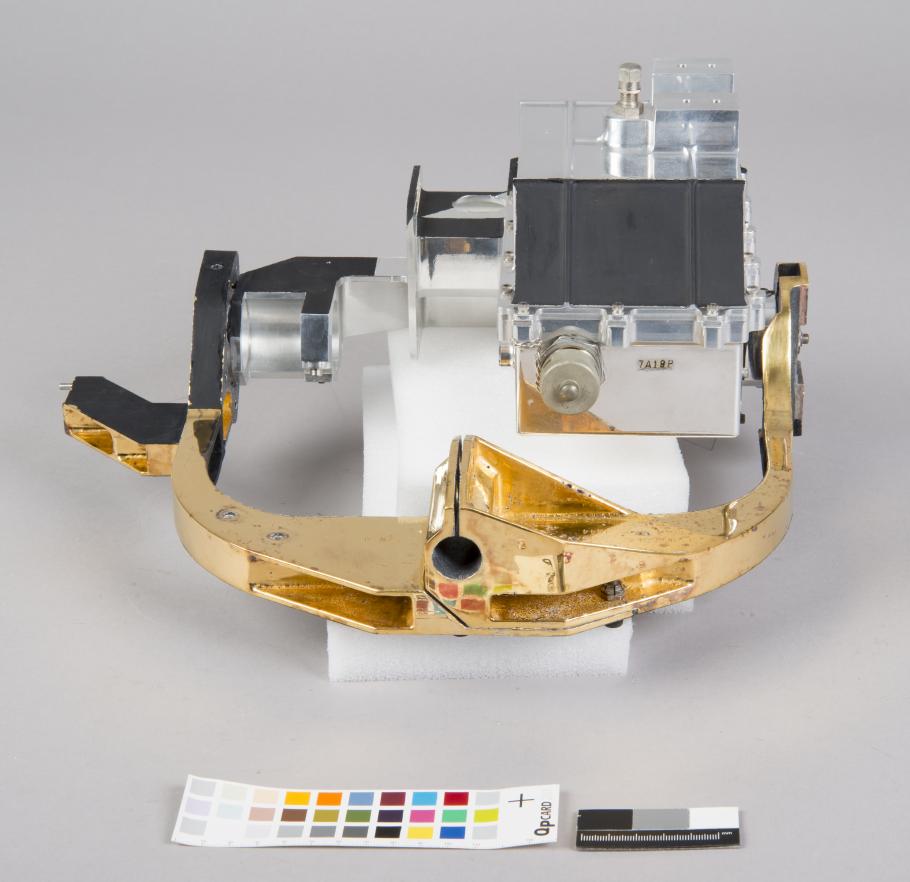One of the primary objectives in the Museum’s previous collection surveys has been to identify artifacts which are actively deteriorating and require stabilizing treatments prior to being relocated to the new storage facility at the Steven F. Udvar-Hazy Center in Chantilly, Virginia. These artifacts with active corrosion, mold contamination, hazardous materials, and physical insecurities were set aside for a team of three contract conservators to perform specialized treatments. Currently a one-year conservation treatment project is underway with a goal of completing 200 small artifacts. All conservation documentation, examinations, and treatment are being performed in the newly built Emil Buehler Conservation Laboratory at the Udvar-Hazy Center.
One notable artifact to pass through the lab during this project is this mock up antenna drive for the Ranger VIII. The Ranger VIII was an unmanned spacecraft that traveled to the Moon in 1965 to take pictures of the lunar surface. It crash landed on the surface, as was planned, but before it crashed it sent back thousands of images which were used to help determine a possible landing site on the Moon. This antenna drive was flagged for immediate conservation treatment due to the large and unique nature of the magnesium corrosion.
As seen in these photographs before conservation, the magnesium corrosion is the white powder that is growing on the object. The corrosion is very interesting as it formed spiraling threads as it grew that are up to 3/4 inch long.
As this corrosion has a unique structure and is not often studied in art conservation, I conducted elemental analysis using X-ray fluorescence and x-ray diffraction (at the Museum Conservation Institute) to determine the composition of the base metal and the corrosion elements. I found that the metal is an alloy composed of magnesium and zinc that is plated with a layer of copper and topped with a layer of gold plating. I also looked at the corrosion through both a stereomicroscope and a HiROX 3-D microscope to see the corrosion structure.
Once I had an understanding of the corrosion, I began removing the corrosion products from the surface to stabilize the object. I used electrolytic reduction to soften the hard mass of corrosion spirals, then working with various scalpels and fine picks, I slowly removed the corrosion from the surface of the object. Under the corrosion products the magnesium surface was pitted and I was surprised to find some of the corrosion pits were very deep at about 1/8 an inch. This seemed very large as the object has only a two-inch deep magnesium core. Another interesting challenge was to avoid using water during the cleaning as it was found that this magnesium alloy is sensitive and corrodes when exposed to water. Once the corrosion products were removed and knowing this objects sensitivity to water it became important to add a moisture barrier to protect the antenna drive from atmospheric moisture. The moisture barrier was created by applying many layers of a clear acrylic resin.
Another research angle I am studying is the effect of the storage unit for this object. After the Ranger VIII mission was completed, this antenna drive mock up was stored in a custom made wooden box that was lined with polyurethane foam. The wood and foam unfortunately were off-gassing corrosive byproducts in this closed box. I am continuing to study how the corrosive byproducts accelerated and contributed to the magnesium corrosion formation.
In discussion with the curator Roger Launius, it was decided to store the antenna drive separate from the wooden box since the box will continue to cause corrosion. The antenna drive is now stored in an archival box with custom-made foam supports and the original box is stored in a separate location. This object is now stable and safely stored, but this project sparked a larger study into the stabilization of magnesium corrosion on artifacts in the Museum’s collection.



